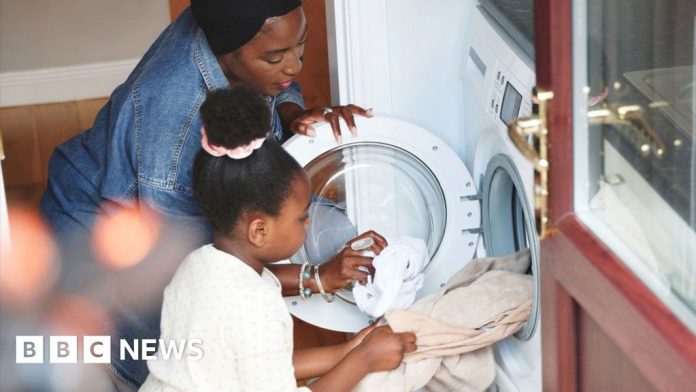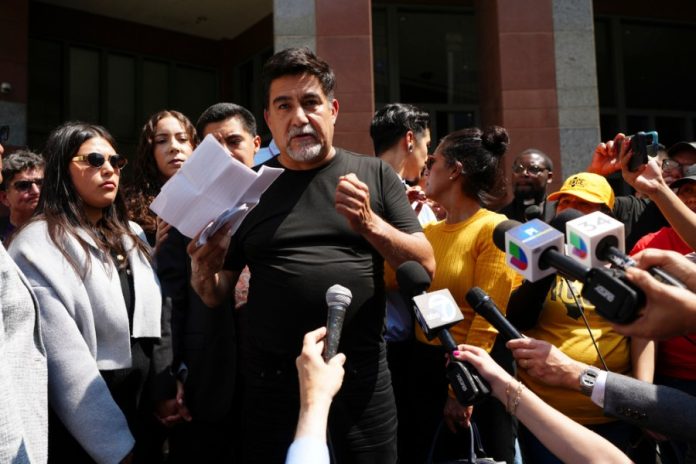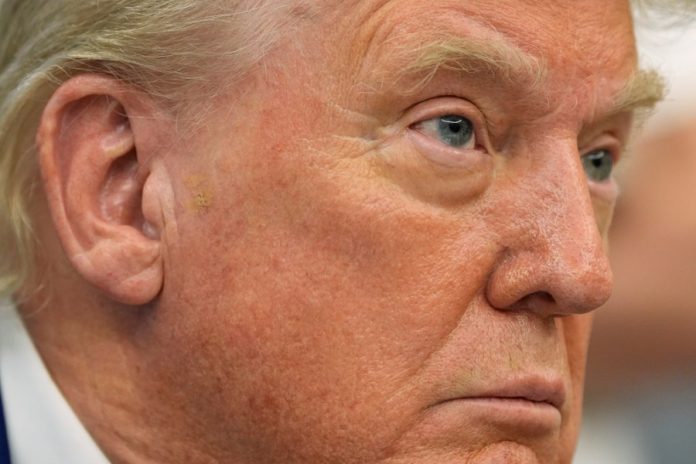
Team Trump may be on the verge of understanding that the U.S., NATO and their Pacific allies are being engulfed in a growing global war being waged against them by Russia and China.
Initially, Ukraine was the most logical country in this multiregional war for the West to put its first win on the board against the Axis of Evil.
But now it has become Iran.
For 46 years, Tehran has been waging its own war against the U.S. and its allies, directly and indirectly.
President Trump’s call on Tuesday for Iran’s unconditional surrender was welcome. So too was his brushing off Russian President Vladimir Putin in a brief conversation they held Tuesday. Putin had made an unserious offer to mediate between the U.S., Israel and Iran over Tehran’s nuclear weapons program.
Trump’s response? “I said, ‘Do me a favor, mediate your own’” conflict.
Team Moscow clearly was not pleased. Twenty-four hours later, Russia’s Foreign Ministry issued a statement “call[ing] on Israel to stop targeting Tehran’s nuclear sites, arguing the ongoing bombardment could lead to global “nuclear catastrophe.”
Once again, when the Kremlin gets faced with a geo-strategic setback, it resorts to nuclear bluster and fearmongering. The Biden administration — and namely former national security advisor Jake Sullivan — fell for it again and again. Team Trump must not.
Trump’s stern pushback on Putin was well-timed and much-needed. For although Israel’s war plan against Iran is succeeding spectacularly and running ahead of schedule, Israeli civilians are still being intentionally targeted by Iranian Supreme Leader Ali Khamenei.
Urgency is needed at the White House. Waves of Iranian ballistic barrages are rapidly depleting Israel’s supply of Arrow interceptor missiles. The Arrows play a key role in Israel’s multitiered air-defense.
To date, Iran has launched more than 400 ballistic missiles and more than 1,000 drones at Israel. Civilian casualties are mounting, with 24 killed in Israel and more than 500 wounded.
Likewise, U.S. allies in the Gulf region, including Saudi Arabia, Bahrain, Kuwait, Oman, Qatar and the United Arab Emirates are exposed and vulnerable — especially their port facilities and oil export infrastructure.
Approximately 20 percent of global petroleum liquids consumption — roughly 20 million barrels per day — transits the strategic Straits of Hormuz. On Wednesday, Iran threatened the U.S. that any involvement in its conflict with Israel would trigger an “all-out war.”
U.S. military facilities, remote bases and interests are also exposed in Jordan, Iraq, and throughout the region. As a result, the Pentagon is being forced to move naval assets out of Bahrain. According to a report in Newsweek, “all forward-deployed U.S. Navy vessels” have departed the “key port” in the Gulf.
The repositioning of military assets is likely an indicator that the President has come to a decision concerning military support for Israel.
That the U.S. is being forced to scramble military assets is, at least temporarily, a win for Moscow at Beijing. Yet, Trump is increasingly likely to change that question by ordering offensive operations against Iran.
If Team Trump is to ensure that the West begins winning World War III, it is not an option to let Fordo — Iran’s key underground nuclear facility, buried deep inside a mountain southwest of Tehran — remain operational.
And it appears that Trump will not. The Pentagon has been assembling a vast array of offensive weapons and capabilities in the region. Fighters and air-tankers have been repositioned to Europe and the Middle East over the last several days. Fordo, clearly, is on the White House’s radar screen.
Likewise, USS Gerald Ford and the USS Nimitz are steaming toward the Mideast to join the USS Carl Vinson already on station. When they arrive, the U.S. will have three powerful carrier groups to take the fight to Iran and defend against any possible retaliation — and, by extension to demonstrate to Putin and Chinese President Xi Jinping that red lines will be enforced.
Iran likely knows what is coming. Team Trump has largely gone silent. Secretary of Defense Pete Hegseth pointedly refused to divulge to the Senate the exact nature of the options he has presented to the White House. Trump himself has remained coy, warning on Wednesday that , “I may do it. I may not do it. I mean nobody knows what I’m going to do.”
Radio silence is never a good thing, and Khamenei appears to know it. His official government X account repeatedly posted warnings on Wednesday aimed at Trump, “Zionists” and Israel. In one of his early posts, Khamenei defiantly exclaimed, “It isn’t wise to tell the Iranian nation to surrender.”
Beijing finally weighed in, too. On Wednesday, China’s Foreign Minister Wang Yi “warned that escalating hostilities between Israel and Iran could spiral out of control, urging all sides to prioritize a ceasefire to prevent the region from sliding into an “abyss.”
But it’s a bit late for that — regime change and loss of China’s investment in Iran may now be on the horizon.
Yang hypocritically condemned “Israel’s acts of disregarding international law and international rules.” Of course, he ignored — as Beijing has done since February 2022 — Russia’s actual violations of international law in Ukraine, including intentional war crimes, crimes against humanity and genocide.
Chances are that Trump understands Iran must be defeated, its nuclear program destroyed. Team Trump likely also understands that it cannot stop there in countering Russia’s and China’s global war against the collective West and its allies in the Pacific.
What remains to be seen after Iran’s nuclear threat is eliminated is where Team Trump pivots to next. If it leaves Russia to Europe and focuses exclusively on China — as Undersecretary of Defense Elbridge Colby prefers — that would be a colossal strategic error.
As it is, the commander of U.S. Central Command Gen. Michael Kurilla has reportedly been fending off Colby in order to position U.S. assets in the Middle East, to defend Israel and eliminate the Iranian nuclear threat if so ordered. Colby has already repeatedly lobbied to end military aid to Ukraine and focus on the Indo-Pacific — the new “priority theater.”
What Colby fails to understand is the connective tissue of it all. The fights in Ukraine, Iran and potentially Taiwan, and other U.S. interests in the Indo-Pacific, are all strategically connected.
Defeating Khamenei in Iran and ensuring Putin’s defeat in Ukraine are the best way two things Trump can do now to confront a rapidly expanding Chinese threat.
This is World War III — not Hollywood’s dramatic version of it, but rather war by a thousand cuts. Winning it starts in Iran and ends by winning in Ukraine.
Mark Toth writes on national security and foreign policy. Col. (Ret.) Jonathan Sweet served 30 years as an Army intelligence officer.














